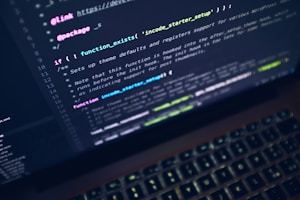Introduction
In this tutorial, we will discuss efficient user administration techniques for operating systems, software, applications, and blockchain platforms. User administration is an important aspect of system management, as it involves the creation, modification, and deletion of user accounts, as well as the assignment of appropriate access rights and privileges to these accounts.
Benefits of Efficient User Administration
Efficient user administration provides several benefits, including:
- Enhanced security: By controlling user access and privileges, efficient user administration helps prevent unauthorized access to sensitive data and resources.
- Improved productivity: Properly assigning and managing user roles and permissions ensures that users have the necessary access to perform their tasks effectively, leading to improved productivity.
- Compliance with regulations: User administration is often a requirement for compliance with various industry regulations and standards, such as GDPR (General Data Protection Regulation) and HIPAA (Health Insurance Portability and Accountability Act).
- Streamlined management: Efficient user administration simplifies the process of managing user accounts, group memberships, and access rights, making it easier to enforce consistent policies across the organization.
Best Practices for Efficient User Administration
Here are some best practices to consider when implementing efficient user administration:
1. Centralized User Management
Centralize user management in a single system or directory service to avoid the need for duplicate account creation and management across multiple platforms. This enables better control over user accounts and facilitates consistent enforcement of security policies.
2. Role-Based Access Control (RBAC)
Implement RBAC to assign users to roles and define the permissions associated with each role. This simplifies user management by grouping users with similar access requirements and allows for easy role-based assignment of access rights.
Example of RBAC implementation using Python:class User:
def __init__(self, name, roles):
self.name = name
self.roles = roles
class Role:
def __init__(self, name, permissions):
self.name = name
self.permissions = permissions
def has_permission(self, permission):
return permission in self.permissions
# Create roles
admin_role = Role("admin", ["create", "read", "update", "delete"])
editor_role = Role("editor", ["create", "read", "update"])
# Create users
user1 = User("John", [admin_role])
user2 = User("Jane", [editor_role])
# Check permissions for users
print(user1.roles[0].has_permission("read")) # True
print(user2.roles[0].has_permission("delete")) # False3. Regular Review of User Accounts
Regularly review and audit user accounts to identify and remove any unnecessary or inactive accounts. This helps reduce the attack surface and ensures that only authorized users have access to resources.
4. Strong Password Policies
Enforce strong password policies, including requirements for password complexity, length, and expiration. This helps protect user accounts from unauthorized access through password guessing or brute-force attacks.
5. Two-Factor Authentication (2FA)
Implement two-factor authentication (2FA) to provide an additional layer of security. 2FA combines something the user knows (e.g., password) with something the user possesses (e.g., a smartphone or hardware token) to authenticate the user's identity.
6. Privilege Separation
Separate user accounts with different access levels into privileged and non-privileged accounts. Privileged accounts should only be used for administrative tasks, while non-privileged accounts should be used for day-to-day operations. This helps mitigate the risk of unauthorized access and reduces the impact of potential security breaches.
7. User Account Deactivation
Deactivate user accounts promptly when employees or contractors leave the organization or no longer require access. This prevents unauthorized access and helps maintain system integrity.
8. Logging and Monitoring
Implement logging and monitoring mechanisms to track user activity and detect any suspicious or unauthorized access attempts. This provides visibility into user behavior and helps identify and respond to potential security incidents.
Conclusion
Efficient user administration is crucial for maintaining system security and managing user access to resources. By following best practices such as centralizing user management, implementing RBAC, and regularly reviewing user accounts, organizations can enhance security, improve productivity, and ensure compliance with industry regulations.

